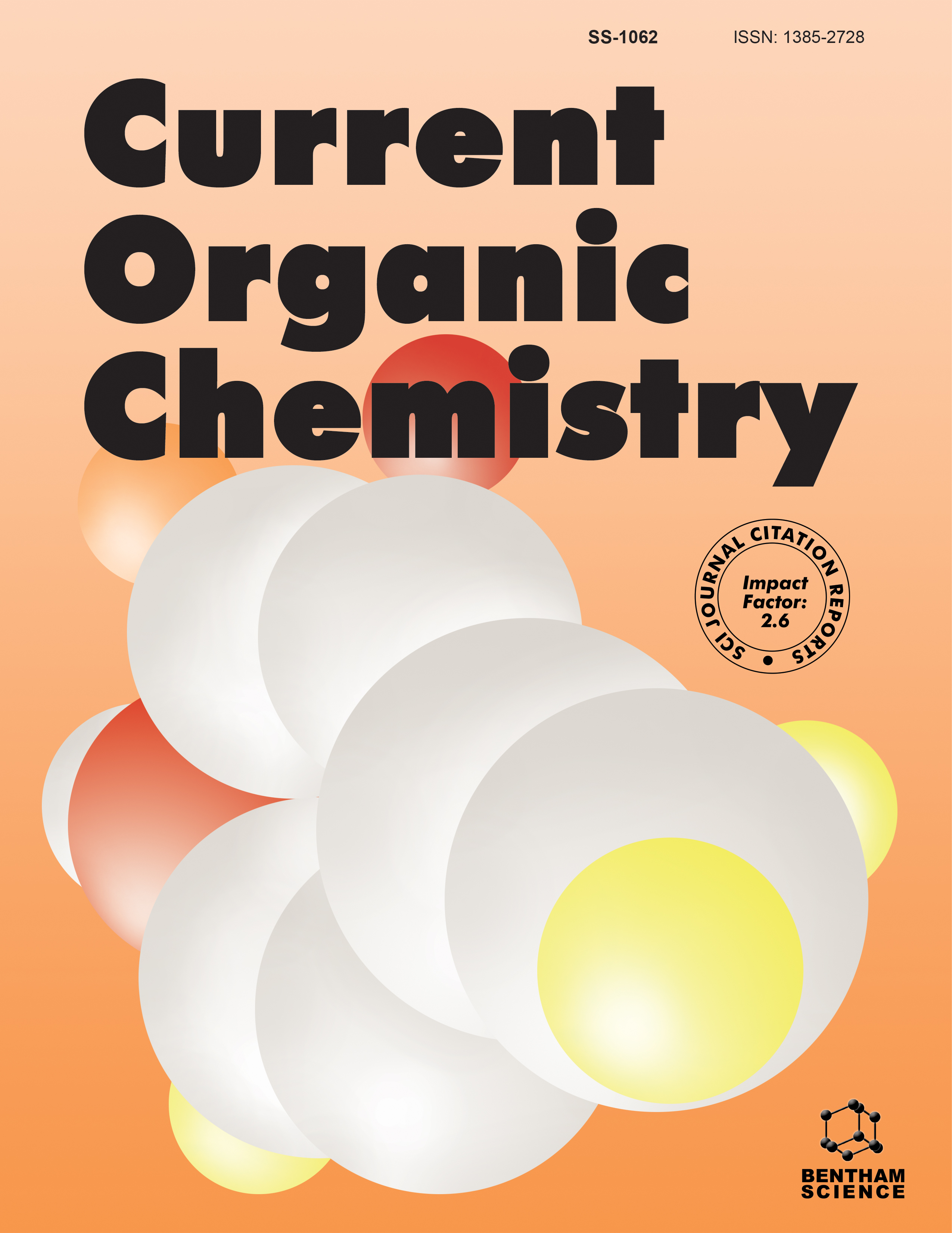- Home
- A-Z Publications
- Current Organic Chemistry
- Previous Issues
- Volume 4, Issue 12, 2000
Current Organic Chemistry - Volume 4, Issue 12, 2000
Volume 4, Issue 12, 2000
-
-
Diterpenes from Marine Opisthobranch Molluscs
More LessAuthors: Margherita Gavagnin and Angelo FontanaMarine opisthobranchs represent a very interesting source of bioactive natural products, which exhibit an extraordinary variety of chemical structures. Opisthobranchs are naked molluscs, apparently unprotected by the physical constrain of a shell. In spite of this, they appear to be free of predation. Their survival is assured by a series of alternative defensive strategies which include the use of chemicals. These bioactive Read More
-
-
-
Biologically Active Aliphatic Acetogenins from Specialized Idioblast Oil Cells
More LessAuthors: Cesar Rodriguez-Saona and J. T. TrumbleMore than three decades ago, Kashman and coworkers [1,2] reported for the first time a class of closely related compounds from avocados (Lauraceae). This class of compounds contains several highly oxygenated long-chain acetylenic and olefinic natural products derived from fatty acids (e.g. possibly C- 18 oleic, linoleic, linolenic, or stearic acid as precursors). These products form part of a group of compounds know Read More
-
-
-
Botrytis Species: An Intriguing Source of Metabolites with a Wide Range of Biological Activities. Structure, Chemistry and Bioactivity of Metabolites Isolated from Botrytis Species.
More LessAuthors: I. G. Collado, J. Aleu, R. Hernandez-Galan and R. Duran-PatronThe Botrytis species belong to the most geographically widespread group of plant pathogens and saprophytes, and cause serious losses to very many commercial crops. These phytopathogenus fungi are the agents of the disease known as grey mould. They biosynthesise characteristic metabolites that, in vitro, produce the grey mould symptoms. The recent discovery that oxidative forces are involved when B. cinerea in Read More
-
-
-
Southern African Hyacinthaceae: Chemistry, Bioactivity and Ethnobotany
More LessAuthors: T. S. Pohl, N. R. Crouch and D. A. MulhollandSouthern Africa is one of two world centres of diversity in the Hyacinthaceae, harbouring approximately half the worlds family representatives. Some 368 species in 27 genera are locally represented. Plants are well distributed throughout the region, with a predominance in the Western Cape of South Africa. Some 23 species in nine genera have been phytochemically investigated, revealing compounds belonging to a diverse r Read More
-
Volumes & issues
-
Volume 29 (2025)
-
Volume 28 (2024)
-
Volume 27 (2023)
-
Volume 26 (2022)
-
Volume 25 (2021)
-
Volume 24 (2020)
-
Volume 23 (2019)
-
Volume 22 (2018)
-
Volume 21 (2017)
-
Volume 20 (2016)
-
Volume 19 (2015)
-
Volume 18 (2014)
-
Volume 17 (2013)
-
Volume 16 (2012)
-
Volume 15 (2011)
-
Volume 14 (2010)
-
Volume 13 (2009)
-
Volume 12 (2008)
-
Volume 11 (2007)
-
Volume 10 (2006)
-
Volume 9 (2005)
-
Volume 8 (2004)
-
Volume 7 (2003)
-
Volume 6 (2002)
-
Volume 5 (2001)
-
Volume 4 (2000)
Most Read This Month
Article
content/journals/coc
Journal
10
5
false
en


